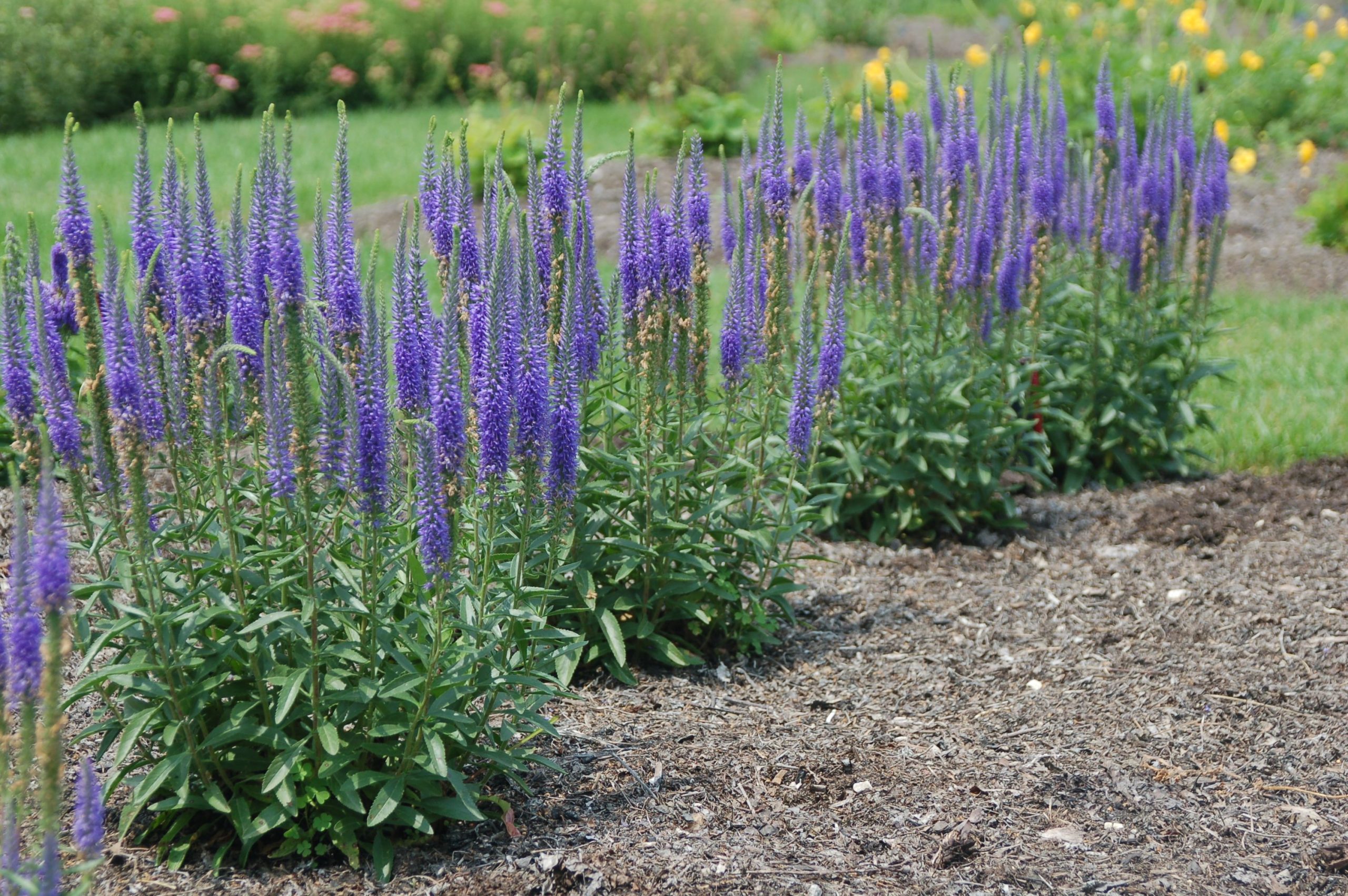With its upright spikes of colorful flowers on green, toothed foliage, veronica makes a distinctive statement in the garden. However, there are several other plants that bear a resemblance to veronica in terms of growth habit, leaf texture, or floral display.
While they share some visual qualities, each plant has unique features that set it apart from true veronica. Here are 9 plants commonly mistaken for veronica and how to tell them apart:
1. Salvia
Like veronica many salvias produce long spikes of tubular flowers in shades of blue purple, pink or white. However, salvia stems are square rather than round, and the leaves are aromatic when crushed. Salvias generally bloom later in summer than veronica.
2. Penstemon
Penstemons, also called beardtongues, can look similar to veronica when not in bloom But their tubular flowers have two lips and prominent stamens giving them a bearded appearance The foliage is smooth versus toothed.
3. Lavandula
Lavender has grey-green, fragrant foliage like some veronicas. But true lavender bears its small flowers on vertical whorls up the flower stalk, rather than a single dense spike. The leaves are smooth-edged and narrower.
4. Nepeta
Catmints produce loose spikes of blue or white flowers reminiscent of some veronicas, But nepeta foliage is aromatic and more scalloped along the leaf margins The flower stalks are also less densely packed
5. Monarda
With their domed flower heads mainly in pink, purple and red hues, bee balms look nothing like veronica in bloom. But their toothed leaves are similar in shape and texture to some veronicas when not flowering.
6. Phlox
Garden phlox and creeping phlox produce flowers on upright stems or mat-forming foliage, bearing some resemblance to veronica. But phlox blossoms are five-petaled and clustered at stem ends rather than tubular spikes along the stalks.
7. Geranium
The deeply cut, toothed leaves of geraniums like ‘Rozanne’ can mimic the foliage of some veronicas when not in bloom. But geraniums have open, 5-petaled flowers rather than tubular spike flowers.
8. Amsonia
Amsonia features clusters of star-shaped periwinkle blue flowers reminiscent of some veronicas. But its foliage is smooth-edged and willow-like rather than toothed. The flower clusters are also more loosely arranged.
9. Verbascum
Mullein can resemble tall veronica species with its spires of yellow blossoms. But verbascum leaves are woolly rather than smooth, and flowers less densely packed on the stalks. The stamens are often distinctly colored and protruding.
While their flowers, foliage and growth may share some similarities, each of these plants has defining characteristics that differentiate it from veronica. Subtle differences in leaf shapes and textures, floral forms and arrangements, aromas, bloom times, stem shapes and other nuances distinguish lookalikes from true veronica. A discerning eye will pick up the variations.
So next time you spot a plant you think is veronica, take a closer look to confirm its identifying qualities before making the call. With careful observation, you’ll learn to recognize the many plants that resemble but just aren’t quite veronica.
Featured Articles by Season




Ask Your Gardening Question
If you’re unable to find the information you need, please submit your gardening question here:
Best Perennials, Veronica ‘Royal Candles’ (Speedwell)
FAQ
What’s the difference between Veronica and speedwell?
Is Russian sage an invasive plant?
Is Veronica speedwell invasive?
- The Ultimate Guide to Growing Strawberries in Raised Beds - August 8, 2025
- No-Dig Garden Beds: The Easiest Way to Grow a Beautiful Garden - August 6, 2025
- How to Protect and Preserve Wood for Raised Garden Beds - August 6, 2025

